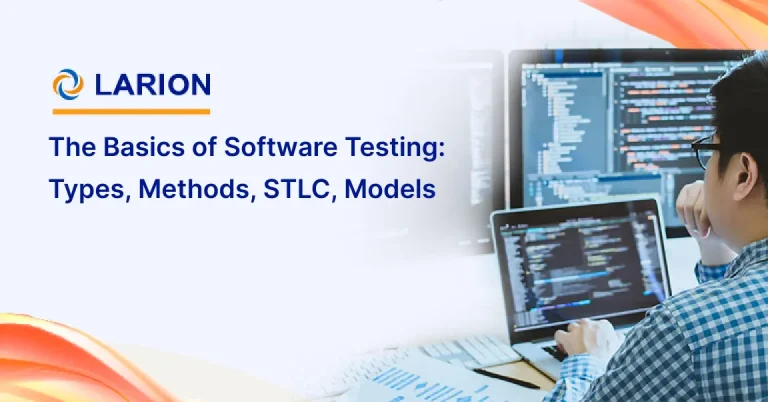Those who have built cloud-based systems clearly understand the strategy needed for SaaS data integration, and what the best practices entail. However, a majority of those who work to bring the benefits of cloud computing to their enterprise do not place the same value on this great technology. So, what exactly are these best practices for data integration when shifting from on-premise to cloud-based systems? They can be summarized into the following aspects: understanding, design, definition, implementation, and testing.
SaaS Data Integration – Best Practices
Understanding the Existing Problem Domain
This means defining the metadata, native within the source system (SaaS provider) and the target system (on-premise inventory management system). It is only after having a complete semantic understanding of a particular problem domain, for instance, the source or target systems (in this case). Remember that there may be many systems within the problem domain. Regardless, understanding the underlying issue is the beginning is the first step to achieving success, even if the resulting integration solution is more complex.
Definition of Information at a Higher Level
This is the process of taking the information obtained from the previous process and defining it at a much higher level, including what this information represents, information ownership, as well as physical attributes. This will provide you with a better understanding of the data you are dealing with, (way beyond the mere metadata), ensuring that you get the integration designed properly the very first time.
Design SaaS Data Integration Solution
Besides designing your integration solution pegged on the movement of data from point A to point B, you should also do the following:
Account for the differences in semantics by using the underlying data transformation layer and mediation layer
Map one schema from the source to the target schema.
By doing this, you will help define how data will be extracted from the system (s), transformed to appear native, and then updated in the relevant target system (s). Ideally, this design is would be performed within the integration technology through visual mapping technology. Moreover, the issue of both security and governance arises and these concepts have to be considered within the design of your data integration solution.
Data Integration Solution Implementation
This is a typical implementation of the data integration solution within the technology. Think of implementation as connecting to both the source and target systems to implement the integration flows according to the design, and employing other steps necessary to get your data integration solution in the best state possible and to be up and running in no time.
Testing
Testing simply refers to assuring that the integration is not only well designed, but also properly implemented, as well as ensuring that the data synchronizes well between the systems. It also means checking known test data within the target system (of the SaaS provider) and closely monitoring how this information flows to the target system. You need to ensure that the data mediation mechanisms are functioning correctly, and review overall performance, security, connectivity, and durability.
Leveraging the Option “Integration-as-a-Service”
Integration-as-a-Service (IaaS) is simply a delivery model that places system delivery into the Cloud. The paradigm facilitates real-time data exchange and exchange of programs among enterprise-wide trading partners and systems. IaaS is a different approach to integration whereby the core integration technology performing integration functions – data migration, connectivity, semantic mediation, and other significant integration facilities – is effectively delivered from the Web as a service. Core advantages to this particular approach include:
IaaS tends to be more cost effective. Because the integrated technology is in the cloud, it is needless to purchase hardware or software in order to support the data integration solution. As a result, the need for capital is reduced, but it is able to offer a quick ROI because the value is quickly realized.
Leveraging IaaS gets the integration solution up-and –running in days, not months, as there is no need to spend on acquiring, installing, or testing hardware and software. This also provides an agility advantage, as the solution is easily contracted or expanded.
IaaS offers better adaptability to the dynamic nature of a cloud delivered application. Therefore, when metadata and interfaces change with time, the IaaS solution delivered from one multi-tenant platform is updated once. In addition, the interface and metadata also change automatically (propagate to all IaaS users). No downloads and/or configuration of updates is necessary.
Since the IaaS provider exists on the platform of the Web, alongside SaaS-delivered applications, firewall and other issues affecting on-premise systems become no issue when considering IaaS.
Leveraging On-Demand SaaS Data Integration Solutions
You can find On-Demand service that offers a set of creative and innovative on-demand integration solutions with easy to use SaaS offerings that allow you to integrate data in SaaS applications – securely and seamlessly across the internet – with data in on-premise applications and systems.
On-demand subscription-based integration service provides powerful features and function, remotely hosted, meaning you won’t have to purchase or host software.
Integration for SaaS
As SaaS becomes more acceptable, the use of SaaS and cloud computing will continue to grow exponentially over the next coming years. While the ability to use an enterprise application you can leverage through a subscription only makes logical sense when you consider the cost of an on-premise system, the true need for integration is not usually apparent until an enterprise is in operational state and your data quality becomes your core concern. In fact, this could remove any value obtained via SaaS use.
Conclusion
Data integration between vendor’s SaaS-delivered system and customer’s existing enterprise system is a good approach. However, this approach –inclusive of best practices – turns out is just as crucial as what you do. Therefore, your key focus should be on the understanding, design, definition, implementation and testing ensure proper use of the right technology for the task at hand.
Purpose-built data integration is one designed to meet a particular business need, with specific key capabilities bundled in that particular solution. Often, we have seen purpose-built data integration come as an appliance, but for enterprises with several needs, purpose-built SaaS data integration increasingly become less useful as specific business needs change and/or types of projects pursued proliferate.
Link:





